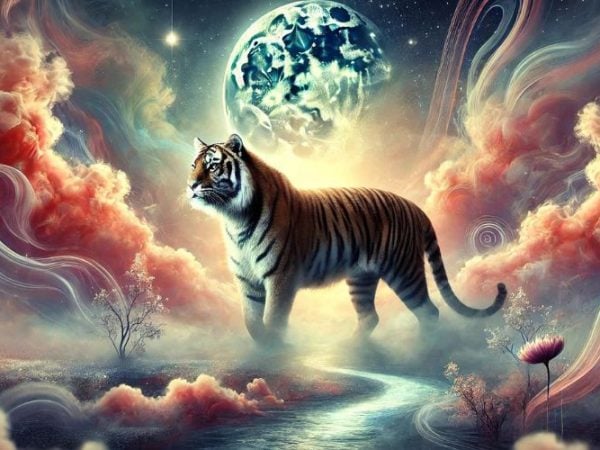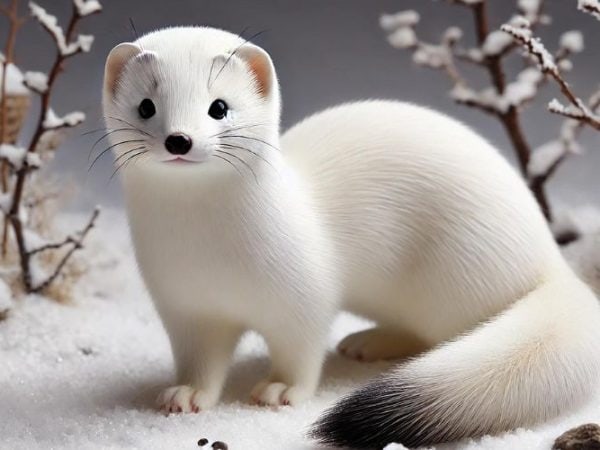What Does a Dragonfly Symbolize?
The Dragonfly is a powerful symbol that represents change, transformation, adaptability, and self-realization in almost every part of the world. Its scurrying flight across water symbolizes going beyond what’s on the surface and looking into the deeper aspects of life. Dragonflies move with elegance and grace and their iridescence represents the discovery of one’s own abilities and removing doubts that limit one’s growth and ability to change. Dragonflies are a symbol of happiness, new beginnings, hope, and love.
Dragonflies are born in the water and spend most of their lives as nymphs or immature bugs. They fly only for a fraction of their life, which exemplifies the virtue of living in the moment and living life to the fullest. The Dragonfly’s eyes possess a vision that is uninhibited and can perceive beyond human limitations, representing the mind’s capability. Dragonflies can also symbolize going past self-created illusions that limit our growth and ability to change. The dragonfly’s association with acuity, agility, and ferocity may also stem from their prolific hunting of other bugs, small fish, and even other dragonfly nymphs.12
Table of Contents
Dragonfly Symbolism in Dreams
The interpretation of dreams is a fascinating subject, however, it can be quite challenging, as it requires taking into account the dreamer’s personal associations and possibly significant events in their life. Our approach to interpreting dream symbols follows the psychological perspective.
Dreaming about dragonflies can have different meanings depending on the context of the dream. In general, a dragonfly represent love, growth, new development, adaptability, and significant changes that are about to come to someone’s life. A flying dragonfly usually represents a positive change, while being attacked by a dragonfly may symbolize deep hurt that the dreamer has not revealed to anyone. In addition, dreaming of a dragonfly can reflect a wish for freedom, independence, and a desire for balance in life.
Dragonflies are also associated with youth, innocence, and the belief that wishes can come true. They remind people that they can always start over in another way and recover their dreams, even though the dragonfly’s life is short. However, in some cultures, the dragonfly is associated with negative symbolism, such as the belief that the soul of the person becomes heavier and denser when a dragonfly flutters over their head. In general, dragonflies are seen as spiritual teachers that promote balance, flexibility, and the enjoyment of life.
Dragonflies are symbols of evolution and transformation. They have the ability to fly and move with great freedom and can change direction and speed without much effort. People who have the dragonfly as a totem are known for being flexible, adaptable, and always in line with the situations they face. Dragonflies also have an iridescent effect that varies depending on the position and angle they take to reflect light. Ultimately, the dragonfly reminds us to go beyond the obvious, to look deeper than just the surface, and to see through problems to find the most assertive solutions.3
What Does a Dead Dragonfly Represent?
If the dragonfly represents transformation, new beginnings, and change, a dead dragonfly in a dream could signify the end of something old and the start of something new. On the other hand, if the dragonfly in a dream is large or menacing, it could be a warning of some danger or threat in one’s life. Dreams involving animals often symbolize primal fears and instinctual nature.4
What does the term “Chasing the Dragonfly” Mean?
Nick Gardner and Alec Nichols coined the term “Chasing the Dragonfly” to describe injecting heroin into the veins. In this context, the dragonfly symbolizes heroin and “chasing” refers to the process of injecting the liquid into the veins using a syringe.5
Dragonfly Mythology and Folklore
In Japan, the dragonfly signifies power, agility, and triumph. It’s revered as a harbinger of summer and autumn, and samurais equate it with strength and agility. Meanwhile, in China, the dragonfly is a symbol of prosperity, harmony, and good luck.
To Native Americans, the dragonfly embodies happiness, speed, and purity. Its diet of airborne insects represents its untainted nature. For Native Americans, the dragonfly represents water, fertility, and abundance. The Hopi tribe believes dragonflies possess supernatural powers, enabling them to grow crops in four days and save their tribe from starvation during migration. The Mimbres, an ancient culture in the Southwest US, depicted the dragonfly on their pottery, showcasing their knowledge of insects in their environment.
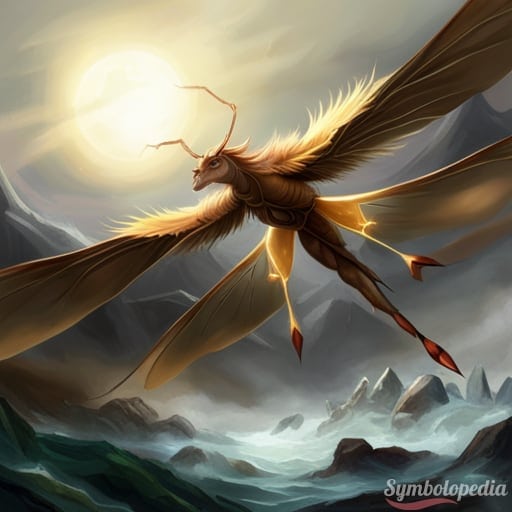
However, Europeans once associated the dragonfly with witches and even Satan, believing it caused chaos and confusion. They dubbed it Ear Cutter, Devil’s Needle, Adderbolt, and worst of all, Horse Stinger. This misconception arose from observing dragonflies near horses kicking and stamping, assuming they were stinging the animals. In reality, they were merely aiding the horses by consuming parasitic insects that caused the horses discomfort.
In Sweden, folklore suggests that dragonflies assess the moral fiber of humans, stitching up their mouths, ears, or eyes if they curse, scold or lie, respectively.
Despite the range of myths surrounding the dragonfly, one feature stands out – its association with transformation. Often deemed an agent of change, it embodies self-realization and personal growth. Its ability to thrive in water, land, and air symbolizes evolution and progress.
In folk beliefs, the dragonfly is linked to snakes, earning it the moniker “snake doctor.” The idea is that the dragonfly accompanies snakes and mends their wounds if injured. Similarly, the term “snake pilot” originates from the same body of folklore.
The dragonfly’s mesmerizing beauty and fluid movements have inspired stories and beliefs worldwide. Yet, the theme that resonates universally is its connection to change and self-discovery. The dragonfly reminds us that adaptation is essential to survival, and embracing change enables growth and transformation.67
Dragonfly on Pottery
The Mimbres created black-on-white pottery featuring dragonflies as a popular subject for illustration. Meanwhile, the Hopi people held the dragonfly in high regard, attributing supernatural powers to the insect and venerating it. Symbolizing water, fertility, and abundance, dragonflies were considered a positive symbol, and the Hopi credited them with saving their tribe from starvation by enabling corn to mature in just four days. Despite the Mimbreños’ deep understanding of their environment, they exhibited a tolerant and humorous attitude towards dragonflies, as evidenced in their stylized dragonfly bowl. Furthermore, dragonfly songs were thought to warn of danger, and the insect’s buzzing sound resembled the Hopi word for water.
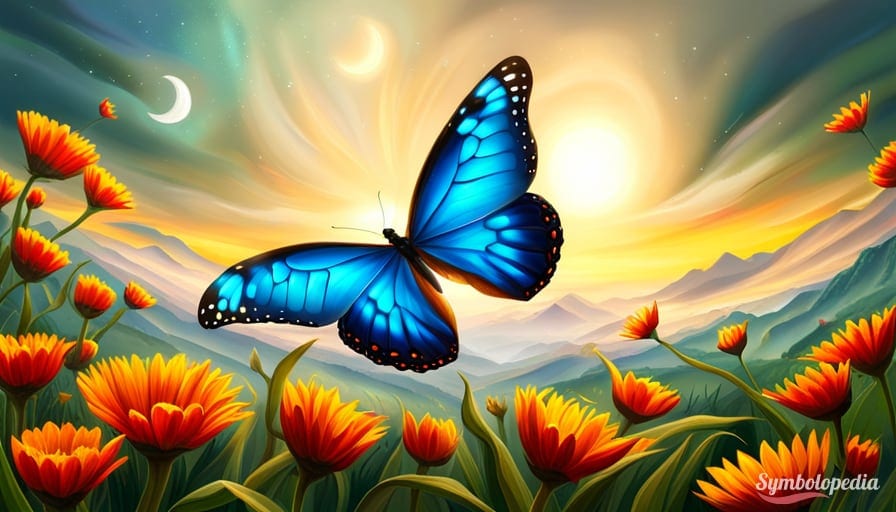
Read also Butterfly Meaning & Symbolism
Dragonfly Symbolism in Christianity & the Bible
In the Bible, this symbolism is used for people who have died and come back to life after being resurrected. The concept of resurrection refers to rising again from death, whether through God’s intervention or natural processes such as healing or reincarnation. Jesus is said to have been resurrected from the dead three times, and these resurrections are seen as spiritual transformations that allow people to continue living with joy and happiness.
Spiritual dragons are often used in the Bible to represent the power of God and the battle between good and evil. The dragonfly, on the other hand, is a symbol of spiritual growth and healing. It is associated with the Archangels Raphael, Michael, Gabriel, and Uriel, who are the angels of healing and protection. Dragonflies are thought to represent the power of transformation and change. In the Bible, spiritual dragons are mentioned in the Book of Daniel, where they are described as having wings like eagle wings. Overall, dragonfly symbolism in Christianity and the Bible represents the potential for transformation and renewal, whether through physical or spiritual means.8
Different Colored Dragonfly Meanings
Dragonflies display a range of colors, each with its own symbolism and significance.
- Red dragonflies represent power and intense emotions, passion, and primal feelings, and are considered a sign of good fortune and prosperity in various Asian cultures.
- Orange dragonflies: happiness, originality, health, and sexuality.
- Yellow dragonflies embody joy, optimism, intelligence, and honor.
- Green dragonflies signify nature, renewal, growth, fertility, emotions, financial security, and prosperity.
- Blue dragonflies: loyalty, intelligence, faith, and trust.
- Purple dragonflies mean peace, loyalty, aspiration, wealth, and dignity.
- Brown dragonflies signify earthiness, groundedness, security, and stability.8
Dragonfly Spirit Animal
Disclaimer: While Symbolopedia employs a scientific methodology to explain and investigate symbols, it is important to acknowledge that symbolic cognition may have predated human awareness. Consequently, some symbols may be more instinctively felt than intellectually comprehended. To account for this, we strive to encompass symbols from diverse fields and belief systems in our descriptions.
The Dragonfly Spirit Animal is a powerful symbol of self-realization and personal transformation. This animal can help you connect with your true self and make quick changes in your life when necessary. The Dragonfly’s agility in the air represents its ability to adapt to any situation, and its iridescent wings reflect the different aspects of your personality that come together to make you unique. If you are feeling stuck or stagnant, calling upon the Dragonfly Spirit Animal can help you move forward and embrace new opportunities for growth and change.9
Meditation to Connect With the Dragonfly Spirit Animal
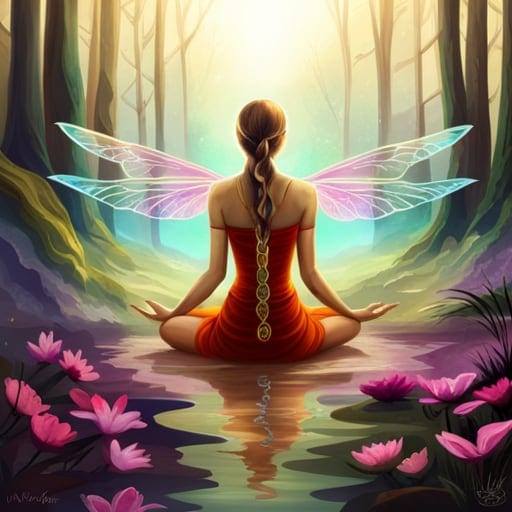
To begin, find a comfortable and peaceful spot to sit or lie down. Take a few deep breaths in and out, allowing your body to relax with each exhale. While breathing deeply, visualize a graceful dragonfly hovering in front of you.
As you gaze at the dragonfly, imagine yourself becoming lighter and more buoyant, as if you too can float effortlessly in the air. Allow yourself to experience the freedom and joy that comes with feeling weightless and unencumbered.
Now, as you observe the dragonfly, envision looking at the world through its eyes. Take note of the vibrant colors and textures of the plants and flowers around you. Hear the sounds of nature, such as rustling leaves, chirping birds, and a nearby stream’s gentle flow.
As you continue to connect with your spirit animal, let its energy fill you with playfulness and curiosity. Sense yourself becoming more adventurous and open to taking risks. Release any fears or doubts that are holding you back and embrace the excitement of new experiences.
Imagine the dragonfly landing on your hand. As you feel the fluttering of its delicate wings against your skin, take a moment to contemplate the dragonfly’s lessons for you. What can you learn from its nimble movements and ability to adapt to change?
Finally, express gratitude to the dragonfly for sharing its wisdom and energy with you. Take a few deep breaths, feeling warmth and lightness in your body, before gradually opening your eyes and resuming your day.
Dragonfly Totem Animal
The dragonfly totem inspires people to accept and leverage their distinctive abilities and skills to adjust to novel circumstances and obstacles. By virtue of its rapid and nimble flight, the dragonfly signifies the capacity to surmount hindrances and transcend difficulties with elegance and effortlessness. Consequently, the dragonfly totem represents a potent emblem of individual development, perseverance, and optimism.
Dragonfly Power Animal
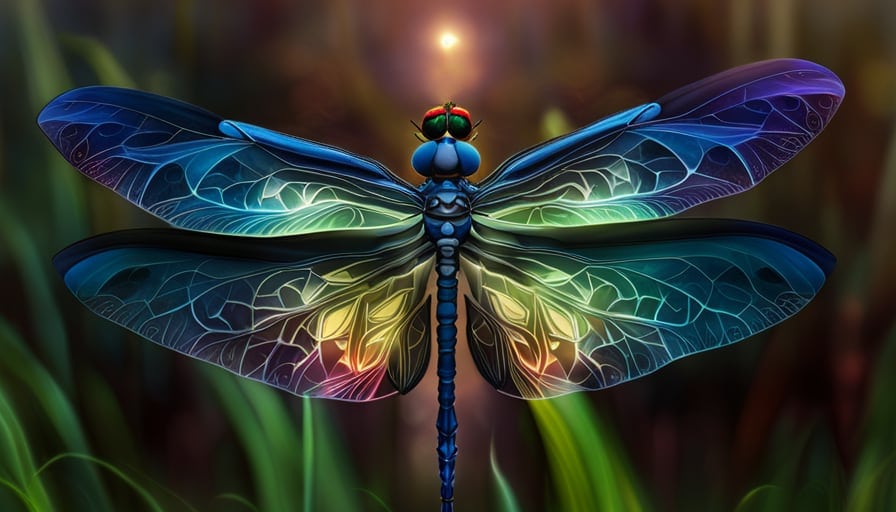
The Dragonfly is a Power Animal that embodies traits helpful for quickly adapting to changing circumstances. With its support, you can cultivate flexibility and attain a fresh perspective that allows you to adapt effectively. Dragonfly medicine empowers you to confront difficult situations and be mindful of those that may bring about significant changes in your life. As creatures dwelling both on land and in water, Dragonflies are regarded as environmental indicators of well-being. Embracing Dragonfly as a Power Animal can provide you with insights into how to maintain balance between physical and emotional wellness for yourself and others. ((https://whatismyspiritanimal.com/spirit-totem-power-animal-meanings/insects/dragonfly-symbolism-meaning/))6
Summary
Dragonflies have significant symbolism in many cultures worldwide. They are associated with transformation, adaptability, self-realization, and going beyond surface appearances. Dragonflies are symbolic of positive change, growth, and new beginnings. People who have dragonflies as a totem are flexible and adaptable. Dreaming of dragonflies can mean a wish for freedom, independence, balance, and significant changes that are about to come. Dead dragonflies in a dream could signify the end of something old and the start of something new. In Japan, the dragonfly signifies power, agility, and triumph. In China, it is a symbol of prosperity, harmony, and good luck. To Native Americans, the dragonfly embodies happiness, speed, and purity, while in Sweden, folklore suggests that they assess the moral fiber of humans.
FAQ
What does the dragonfly symbolize?
The dragonfly symbolizes change, transformation, adaptability, self-realization, happiness, new beginnings, hope, and love.
What do dragonflies represent in dreams?
In dreams, dragonflies can represent love, growth, new development, adaptability, significant changes, and a wish for freedom, independence, and balance in life.
What does a dead dragonfly in a dream represent?
A dead dragonfly in a dream can represent the end of something old and the start of something new, or it could be a warning of danger or threat in one’s life.
What meaning or symbolism is associated with the dragonfly in various cultures?
In Japan, the dragonfly signifies power, agility, and triumph; in China, it’s a symbol of prosperity, harmony, and good luck; to Native Americans, it embodies happiness, speed, and purity; and in Sweden, folklore suggests that dragonflies assess the moral fiber of humans.
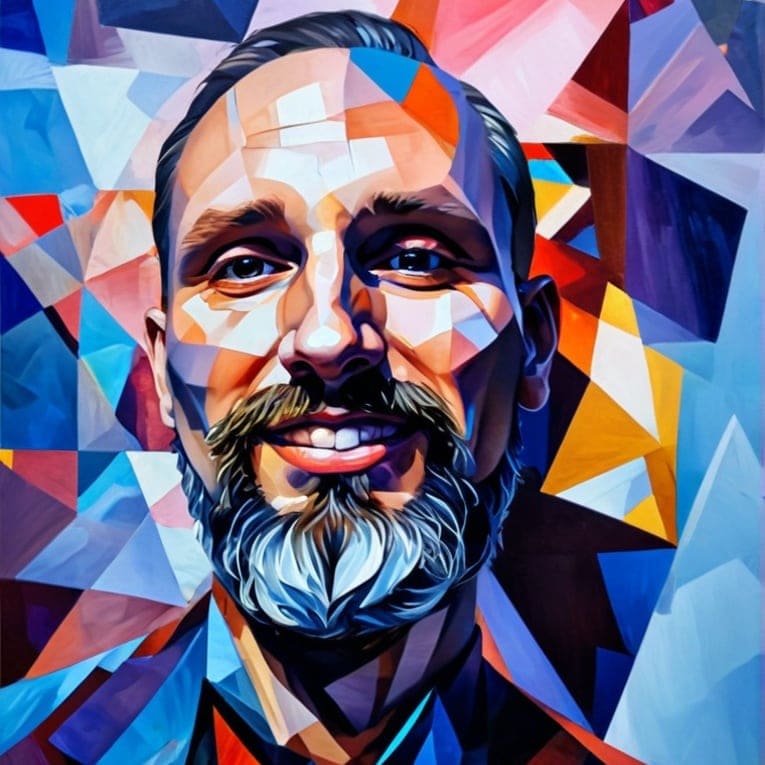
Reviewed by Alexander Lys, M.L., a specialist in the field of symbolism research and dream psychology. A certified participant in numerous psychological seminars and courses, the author of hundreds of articles on psychology, including studies on symbolism in dreams and myths from a scientific perspective.
- https://dragonflytransitions.com/why-the-dragonfly/ [↩]
- https://worldbirds.com/dragonfly-symbolism/ [↩]
- https://angelnumber.org/dragonfly-dream-meaning [↩]
- https://spiritualdesk.com/what-is-the-spiritual-meaning-of-a-dead-dragonfly/ [↩]
- https://www.urbandictionary.com/define.php?term=Chasing+the+Dragonfly [↩]
- https://scalar.usc.edu/works/chid490animalmourning/dragonfly-and-butterfly [↩] [↩]
- http://www.jstor.org/stable/3087894 [↩]
- https://www.bibleversesnow.com/dragonfly-symbolism-in-the-bible/ [↩] [↩]
- https://a-z-animals.com/blog/dragonfly-spirit-animal-symbolism-meaning/ [↩]
